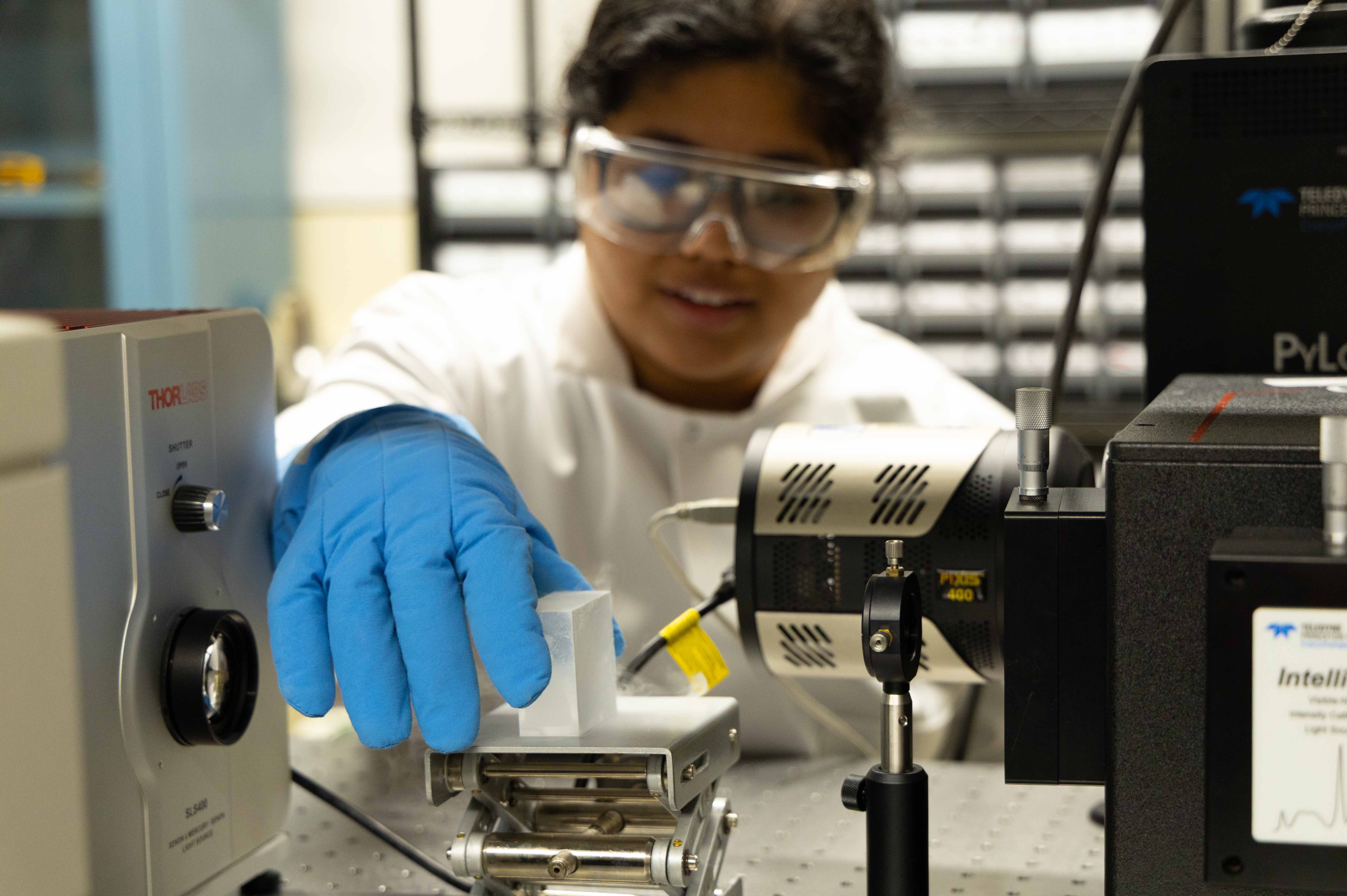Terp Engineer Joins NASA Mission to Study Earth’s Prebiotic Chemistry
A University of Maryland graduate student was selected to participate in a NASA mission internship to investigate Saturn’s largest moon, Titan—a revolutionary rotorcraft expedition that will travel farthest than any other robotic lander in history, with the goal to answer questions about Earth’s prebiotic chemistry. Meryl Wiratmo, a doctoral candidate in the Department of Materials Science and Engineering, will participate in the Dragonfly Student & Early Career Investigator Program, a project that will carry planetary research, mission science, operations planning and instrumentation development and testing for the Dragonfly rotorcraft mission, which will launch in 2028. The student, a long-time space enthusiast, was accepted into the team in early October. “When I found out I was selected to the [Dragonfly] program, I was jumping up and down, screaming. It was very funny,” said Wiratmo. “I have been interested in space since I was a small child, and was alive and coherent enough to see the spacecraft that went to Pluto, ‘New Horizons,’ launch and collect pictures.” The student will join a team of scientists planning a mission in which an 8-rotor aircraft, named Dragonfly, will land on Saturn’s largest moon in 2034 and travel up to 110 miles. The octocopter is also expected to make one flight every one-to-two Titan days, the equivalent of roughly 16 Earth days, and explore areas of geological interest such as sand dunes and its impact site, “Selk Crater.” The interest in exploring Titan comes as the only moon in the solar system with a dense atmosphere, supporting an Earth-like water cycle of methane clouds, rain, and rivers that flow into lakes and seas. The carbon-rich materials found in Titan’s icy crust preserve chemicals present on Earth before life existed, and underneath the surface lies an interior water ocean. These characteristics make this moon ideal to study how chemistry has evolved before life existed on Earth. To conduct this study, the Dragonfly rotorcraft will be equipped with a sampling system that will feed a mass spectrometer (an apparatus that categorizes materials chemical composition), as well as meteorological sensors that will measure the moon’s atmospheric temperature, pressure, among other key features. Wiratmo’s contributions will focus on interpreting neutron spectrometer measurements on Titan’s surface, which constitutes setting standards to allow for accurate data analysis to reveal the composition of the chemistry found in the moon—a subfield of materials science that she is passionate about. “As I’m learning more about myself in my Ph.D. journey, spectroscopy is where I find my true passion, so having the opportunity to immediately get to work on a project this interesting was really exciting,” she said. Dragonfly is currently being designed and built in the Johns Hopkins Applied Physics Laboratory under the guidance of Elizabeth (Zibi) Turtle, the principal investigator, and the mission was selected in 2019 as part of NASA’s New Frontiers Program, which conducts planetary investigations with innovative approaches to answer questions about the solar system. Wiratmo’s doctoral advisor, Assistant Professor Tim Koeth in materials science and engineering, recalled receiving the ecstatic news of her acceptance on the morning of October 8. “It is fitting that Meryl, a titan of our lab research group, would be selected to contribute to the investigation of Titan; she is the first whose eyes have looked up to the sky and beyond," said Koeth.
October 28, 2025 Prev Next |


